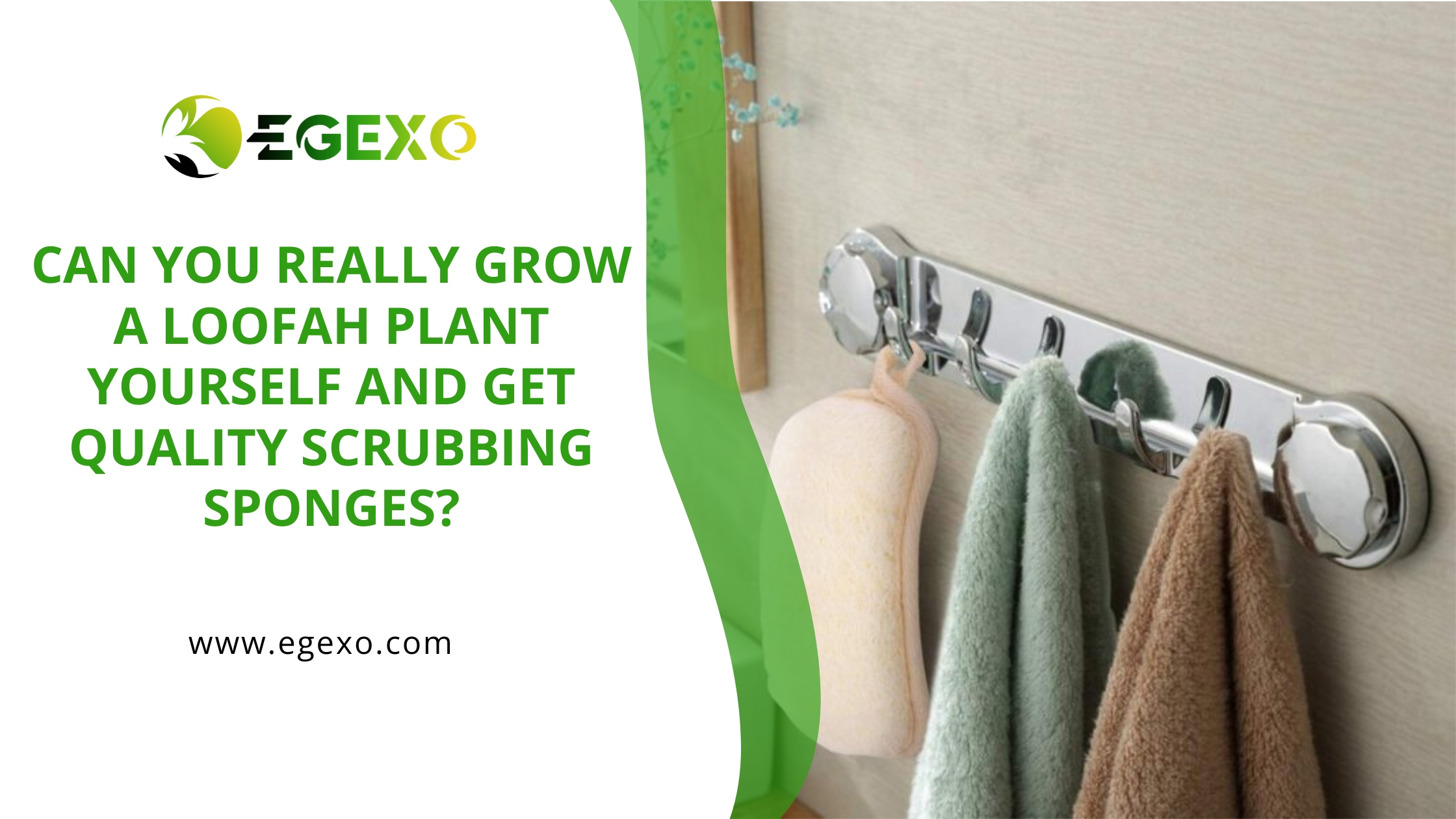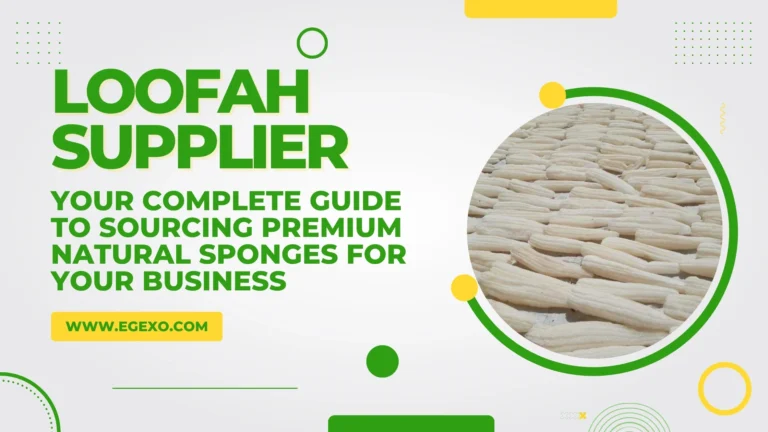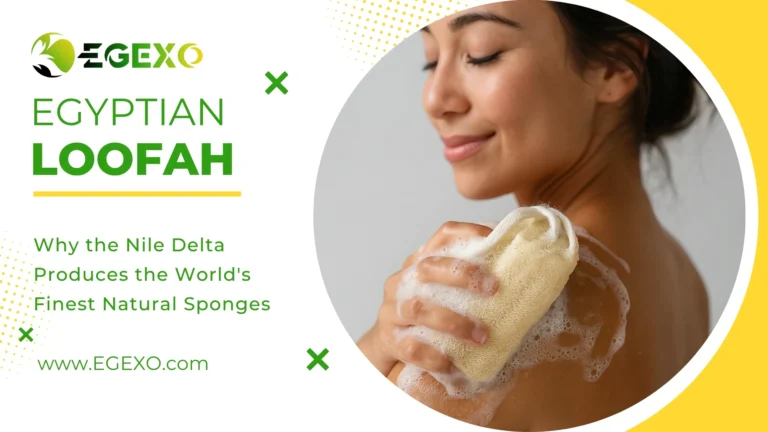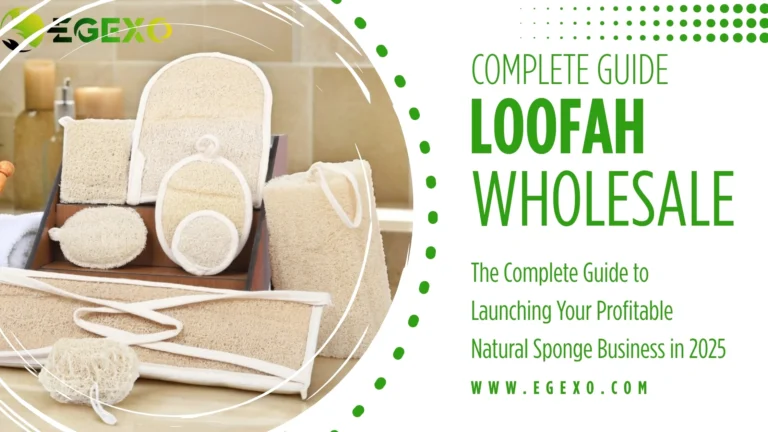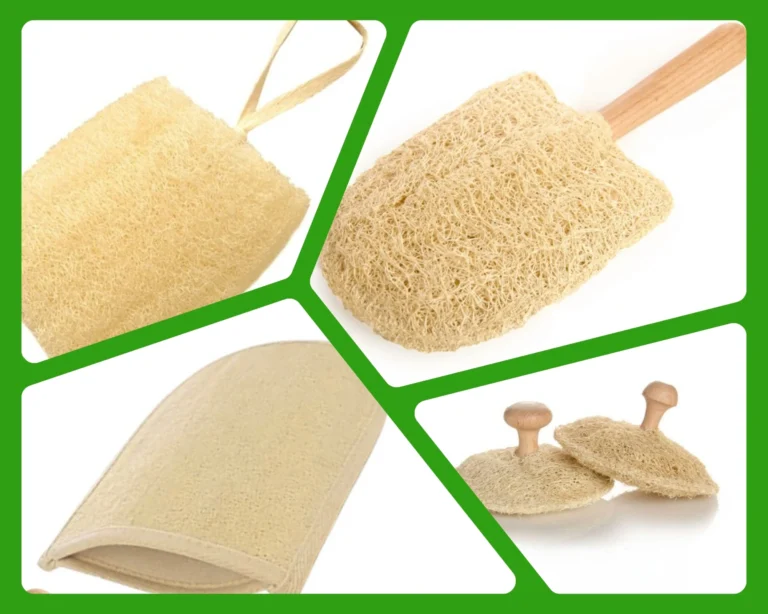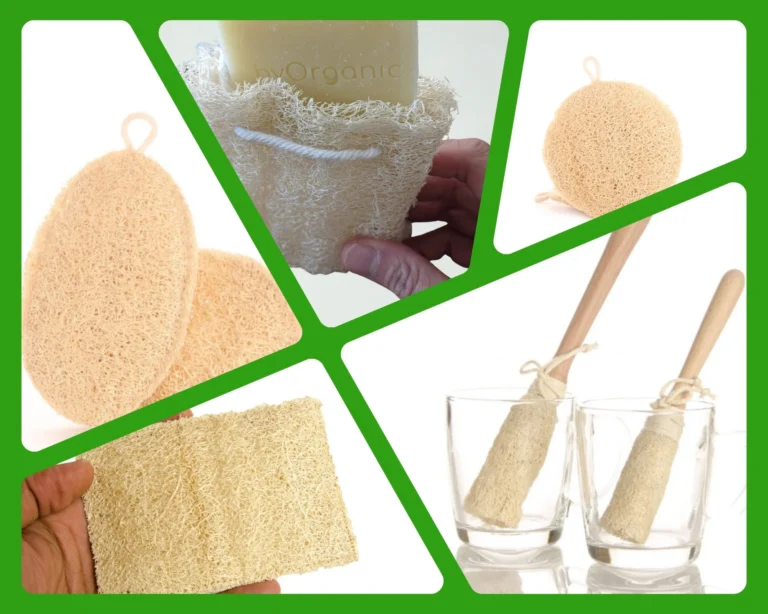Can You Really Grow a Loofah Plant Yourself and Get Quality Scrubbing Sponges?
Imagine reaching into your garden and harvesting your own natural scrubbing sponges – it sounds almost too good to be true, doesn’t it? Yet thousands of gardeners worldwide are discovering that growing loofah plants (also known as luffa) at home is not only possible but surprisingly rewarding. The question that captures everyone’s attention is: Is it possible to grow a loofah plant yourself and it turn out to be a quality scrubbing sponge?
The short answer is absolutely yes – but there’s a fascinating journey from seed to sponge that requires patience, proper technique, and understanding of what makes a truly quality natural loofah sponge.
The Science Behind Home-Grown Loofah Quality
When I first discovered that loofah sponges weren’t ocean creatures but actually came from plants, I was skeptical about whether homegrown versions could match commercial quality. After researching and speaking with agricultural experts, the science is clear: home-grown loofah plants can produce scrubbing sponges that rival or even exceed commercial products in quality.
The key lies in understanding that loofah sponge quality depends on several factors: fiber density, natural antibacterial properties, durability, and texture. Professional Egyptian loofah producers have perfected these elements over generations, but home growers can achieve similar results with the right approach.
What Makes a Quality Natural Loofah?
A premium exfoliating sponge from loofah plants exhibits specific characteristics:
- Uniform fiber structure: Even distribution of natural fibers without weak spots
- Optimal density: Firm enough for scrubbing, flexible enough for comfort
- Natural antimicrobial properties: Inherent resistance to bacteria and mold
- Durability: Maintains structure through multiple uses
- Appropriate texture: Neither too harsh nor too soft for intended use
Research from agricultural universities shows that home-grown luffa plants can achieve all these qualities when grown under proper conditions. The farm to export process used by professional suppliers like those producing Egyptian loofah can be adapted for home cultivation.
Growing Conditions: The Foundation of Quality
Climate Requirements for Superior Loofah Production
Loofah plants (Luffa aegyptiaca and Luffa acutangula) are warm-season crops that thrive in conditions similar to cucumbers or squash. For quality sponge production, you need:
Temperature: Consistent temperatures between 70-85°F (21-29°C) throughout the growing season Growing season: Minimum 150-200 frost-free days for full maturation Humidity: Moderate humidity levels (50-70%) for optimal growth Sunlight: Full sun exposure (6-8 hours daily) for robust development
A study conducted by the University of Kentucky Extension found that loofah plants grown in suboptimal conditions produced sponges with 30-40% lower fiber density compared to those grown in ideal environments. This directly impacts the scrubbing effectiveness of the final product.
Soil Preparation: Building the Foundation
The soil quality directly influences the fiber structure of your natural loofah sponges. Professional growers emphasize these soil requirements:
- pH level: 6.0-6.8 (slightly acidic to neutral)
- Drainage: Well-draining soil to prevent root rot
- Organic matter: Rich in compost or well-rotted manure
- Fertility: Balanced N-P-K with emphasis on potassium for fiber development
Dr. Maria Rodriguez, a horticulture specialist at Texas A&M, notes: “The mineral content of the soil directly translates to the strength and flexibility of loofah fibers. Plants grown in nutrient-deficient soils produce brittle, poor-quality sponges.”
Step-by-Step Growing Guide for Quality Results
Starting from Seeds: The Critical First Phase
Success begins with quality seeds and proper germination techniques:
Seed selection: Choose varieties known for sponge quality (Luffa aegyptiaca is preferred over Luffa acutangula for scrubbing applications)
Pre-germination treatment: Soak seeds in warm water for 24 hours to improve germination rates
Starting indoors: Begin 6-8 weeks before last frost date in biodegradable pots
Transplanting: Wait until soil temperature consistently reaches 65°F (18°C)
Supporting Structure: Essential for Quality Development
Unlike store-bought products from kitchen loofah suppliers, home-grown loofahs need proper support systems:
Trellising: Install sturdy trellises 6-8 feet tall before planting Spacing: Allow 3-4 feet between plants for adequate air circulation Training: Guide vines upward to ensure straight fruit development
Proper support prevents ground contact, which can cause irregular shapes and reduced sponge quality. Professional operations use sophisticated support systems to ensure uniform development.
What Can Go Wrong? Common Quality Issues and Solutions
Problem: Thin, Weak Sponges
Cause: Usually results from insufficient growing time or poor nutrition Solution: Ensure minimum 120 days from flowering to harvest; supplement with potassium-rich fertilizer
Problem: Irregular Texture
Cause: Inconsistent watering or pest damage during development Solution: Maintain consistent soil moisture; implement integrated pest management
Problem: Dark Spots or Discoloration
Cause: Fungal issues or harvesting too early Solution: Improve air circulation; wait for complete maturation before harvest
Agricultural extension research shows that 80% of home-growing failures result from harvesting too early. Unlike commercial raw loofah scrubbers, homegrown varieties need complete on-plant drying for optimal quality.
Harvesting and Processing: The Art of Quality Sponge Creation
Timing the Harvest for Maximum Quality
The transformation from gourd to luffa sponge requires precise timing:
Visual cues: Skin turns brown and papery; feels lightweight Sound test: Mature fruits rattle when shaken due to loose seeds Texture check: Skin easily peels away from fiber structure
Master grower James Chen, who supplies loofah to specialty bath product manufacturers, explains: “The difference between a mediocre sponge and an exceptional one often comes down to waiting just the right amount of time. Patience in harvesting translates directly to quality in the final product.”
Processing Techniques for Professional Results
Initial cleaning: Remove outer skin completely, starting from the bottom Seed removal: Shake out all seeds (save for next year’s planting) Bleaching (optional): Brief hydrogen peroxide treatment for lighter color Drying: Complete air drying in ventilated area for 2-3 weeks Final preparation: Trim ends and shape as desired
Professional processing facilities follow strict quality standards that home growers can adapt for their own production.
Comparing Home-Grown vs. Commercial Quality
Advantages of Home-Grown Loofah Sponges
Freshness: No storage degradation or transportation stress Customization: Control over size, shape, and processing methods Organic assurance: Complete knowledge of growing conditions and inputs Cost-effectiveness: Significant savings compared to premium commercial products
Potential Limitations
Consistency: May vary between growing seasons and individual fruits Scale: Limited production quantity compared to commercial operations Expertise: Learning curve required for optimal results Climate dependency: Success varies significantly by geographic location
Research from the International Loofah Association indicates that experienced home growers can achieve 85-90% of commercial quality standards, with some exceptional producers exceeding professional benchmarks.
Business Opportunities: From Garden to Market
Can Home-Grown Loofahs Support a Business?
Many entrepreneurs wonder if home cultivation can supply a loofah business. The reality is nuanced:
Small-scale viability: Perfect for farmers’ markets, local bath and body shops, or online specialty sales Scalability challenges: Competing with established suppliers like professional Egyptian loofah exporters requires significant infrastructure Niche markets: Specialty applications like loofah pet spa grooming products offer opportunities
Sarah Martinez built a successful regional business starting with 20 plants in her backyard. “I began selling at farmers’ markets and now supply three local spas. The key is emphasizing the artisanal, locally-grown aspect.”
Value-Added Opportunities
Processed products: Bath and body loofah products with added oils or herbs Educational workshops: Teaching others to grow and process loofahs Seed sales: Premium seeds from proven high-quality plants Custom shapes: Specialized forms for specific applications
Maximizing Your Success: Advanced Techniques
Variety Selection for Specific Uses
Different loofah varieties excel in different applications:
Luffa aegyptiaca: Best for general scrubbing and exfoliation Luffa acutangula: Softer texture, ideal for sensitive skin applications Hybrid varieties: Developed for specific climate conditions or uses
Season Extension Techniques
Greenhouse cultivation: Extends growing season in cooler climates Succession planting: Multiple plantings for continuous harvest Container growing: Allows cultivation in limited spaces with proper support
Professional growers in regions with shorter seasons use high tunnels and season extension techniques to achieve commercial quality standards despite climate limitations.
Frequently Asked Questions About Growing Quality Loofah Sponges
How long does it take to grow a loofah plant from seed to usable sponge?
The complete process takes approximately 150-200 days from seed to finished sponge. This includes 80-100 days of active growing, 40-50 days of on-plant drying, and 2-3 weeks of final processing. The extended timeline is essential for developing the fiber density that creates a quality scrubbing sponge.
Can homegrown loofah sponges match the quality of Egyptian loofah products?
With proper growing conditions and techniques, home-grown loofahs can achieve 85-90% of commercial Egyptian loofah quality. The main differences lie in consistency and scale rather than inherent quality limitations. Some experienced home growers report producing sponges superior to mass-market commercial products.
What’s the biggest mistake people make when growing loofahs for sponges?
The most common error is harvesting too early. Many growers see mature-looking fruits and harvest immediately, but quality sponges require complete on-plant drying until the skin becomes papery and brown. Premature harvesting results in weak, thin sponges with poor scrubbing ability.
How many plants do I need to supply my household with loofah sponges?
A typical household needs 8-12 quality loofah sponges per year for various cleaning tasks. Each mature plant produces 4-8 usable sponges, so 2-3 healthy plants usually provide sufficient supply for a household, with extras for gifts or sale.
Is it worth growing loofahs compared to buying commercial products?
For most gardeners, the answer is yes. Beyond cost savings (often 70-80% less than premium commercial sponges), home growing provides complete control over quality, processing methods, and ensures freshness. The satisfaction of using sponges you’ve grown yourself adds significant value beyond mere economics.
Can I grow loofahs in containers or small spaces?
Yes, but success requires large containers (minimum 20 gallons), strong support structures, and careful attention to watering and fertilization. Container-grown plants typically produce fewer but still high-quality sponges. Dwarf varieties are being developed specifically for container cultivation.
What makes some loofah sponges last longer than others?
Durability depends on fiber density, proper drying, and processing techniques. Sponges from fully mature fruits that dried completely on the plant before processing typically last 3-4 times longer than those processed prematurely. Proper storage in dry conditions also significantly extends lifespan.
Conclusion: Your Journey to Quality Loofah Sponges
Is it possible to grow a loofah plant yourself and it turn out to be a quality scrubbing sponge? Absolutely, and the journey is more rewarding than you might imagine. With proper planning, patience, and technique, home gardeners can produce natural loofah sponges that rival commercial products in quality while offering the satisfaction of complete self-sufficiency.
The key factors for success remain consistent: choosing appropriate varieties, providing optimal growing conditions, exercising patience during the extended growing and processing period, and learning from each season’s experience. While commercial suppliers like Egexo have perfected large-scale production through generations of experience, home growers can achieve remarkable results on a smaller scale.
Whether you’re interested in sustainable living, starting a small business, or simply curious about this fascinating plant, growing your own loofah sponges offers a unique combination of gardening challenge and practical reward. The natural, biodegradable sponges you’ll harvest represent not just a useful household item, but a connection to traditional, sustainable practices that are increasingly valuable in our modern world.
Remember, every expert was once a beginner. Your first season might not produce perfect results, but with each growing cycle, your understanding and techniques will improve. The investment in time and learning pays dividends in quality, sustainability, and the deep satisfaction of creating something useful with your own hands.
For those ready to take the next step beyond home growing, exploring the broader world of loofah products and applications through established suppliers can provide inspiration and market insight. Whether you’re growing for personal use or commercial aspirations, the foundation remains the same: quality begins with proper cultivation, and success comes from understanding the complete process from seed to sponge.

